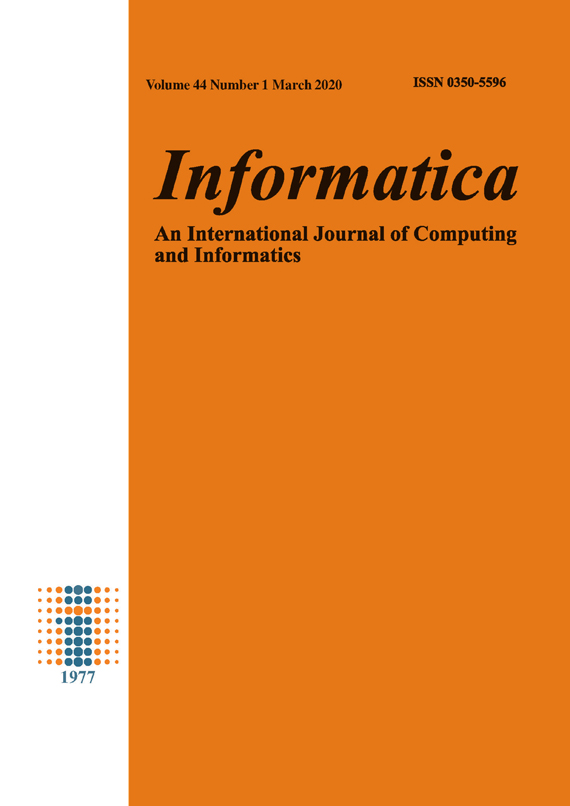The Iris dataset revisited. A partial ordering study
DOI:
https://doi.org/10.31449/inf.v44i1.2715Abstract
The well-known Iris data set has been studied applying partial ordering methodology. Previous studies, e.g., applying supervision learning such as neural networks (NN) and support-vector machines (SVM) perfectly distinguish between the three Iris subgroups, i.e., Iris Setosa, Iris Versicolour and Iris Virginica, respectively, in contrast to, e.g., K-means clustering that only separates the full Iris data set in two clusters. In the present study applying partial ordering methodology further discloses the difference between the different classification methods. The partial ordering data appears to be in perfect agreement with the results of the K-means clustering, which means that the clear separation in the three Iris subsets applying NN and SVM is neither recognized by clustering nor by partial ordering methodology.References
Bruggemann, R. & Patil, G. P. (2011). Ranking and Prioritization for Multi-indicator Systems - Introduction to Partial Order Applications. Springer, New York. https://www.springer.com/gp/book/9781441984760 (Accessed Mar.. 2019)
Bruggemann, R., Carlsen, L. Voigt, K. & Wieland, R. (2014). PyHasse Software for Partial Order Analysis: Scientific Background and Description of Selected Modules. in R. Bruggemann, L. Carlsen, and J. Wittmann (Eds.) Multi-indicator Systems and Modelling in Partial Order. Springer, New York, pp 389-423. https://www.springer.com/la/book/9781461482222 (Accessed Febr. 2019)
Carlsen, L. and Bruggemann, R. (2019). Stakeholders’ opinions. Food sustainability as an exemplary case, submitted for publication
Davey, B. A. & Priestley, H. A. (2002). Introduction to Lattices and Order. 2nd ed., Cambridge University Press, Cambridge. https://www.cambridge.org/core/books/introduction-to-lattices-and-order/946458CB6638AF86D85BA00F5787F4F4 (Accessed Mar. 2019)
Dua, D. and Graff, C. (2019), UCI Machine Learning Repository [http://archive.ics.uci.edu/ml]. Irvine, CA: University of California, School of Information and Computer Science. (accessed Mar. 2019)
Halfon, E. and Reggiani, M.G., 1986, On the ranking of chemicals for environmental hazard, Environ. Sci. Technol, 20, 1173-1179. doi: 10.1021/es00153a014
Iris (1988) Iris data set, https://archive.ics.uci.edu/ml/datasets/iris (accessed Mar. 2019)
Koppatz, P. and Bruggemann, R. (2017). PyHasse and Cloud Computing. in M. Fattore & R. Bruggemann (Eds.). Partial Order Concepts in Applied Sciences, pp 291-300. Springer, Cham. https://www.springer.com/la/book/9783319454191 (Accessed Mar. 2019)
Restrepo, G. & Bruggemann, R. (2008). Dominance and Separability in posets, their application to isoelectronic species with equal total charge. J. Math. Chem. 44, 577-602. 10.1007/s10910-007-9331-x
Wikipedia (2019) Iris flower data set, https://en.wikipedia.org/wiki/Iris_flower_data_set (accessed Mar. 2019)
Downloads
Published
How to Cite
Issue
Section
License
I assign to Informatica, An International Journal of Computing and Informatics ("Journal") the copyright in the manuscript identified above and any additional material (figures, tables, illustrations, software or other information intended for publication) submitted as part of or as a supplement to the manuscript ("Paper") in all forms and media throughout the world, in all languages, for the full term of copyright, effective when and if the article is accepted for publication. This transfer includes the right to reproduce and/or to distribute the Paper to other journals or digital libraries in electronic and online forms and systems.
I understand that I retain the rights to use the pre-prints, off-prints, accepted manuscript and published journal Paper for personal use, scholarly purposes and internal institutional use.
In certain cases, I can ask for retaining the publishing rights of the Paper. The Journal can permit or deny the request for publishing rights, to which I fully agree.
I declare that the submitted Paper is original, has been written by the stated authors and has not been published elsewhere nor is currently being considered for publication by any other journal and will not be submitted for such review while under review by this Journal. The Paper contains no material that violates proprietary rights of any other person or entity. I have obtained written permission from copyright owners for any excerpts from copyrighted works that are included and have credited the sources in my article. I have informed the co-author(s) of the terms of this publishing agreement.
Copyright © Slovenian Society Informatika








